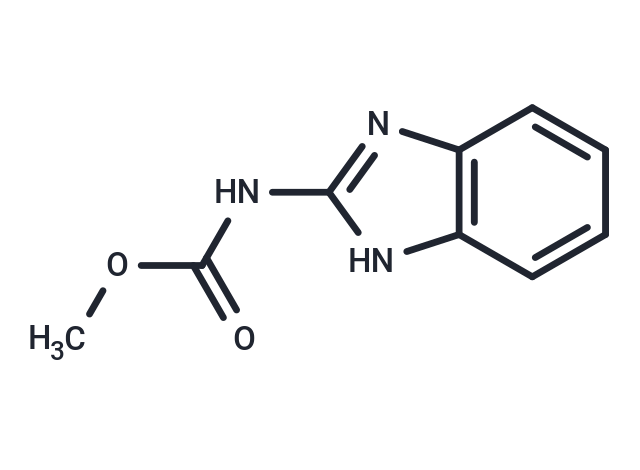Shopping Cart
- Remove All
 Your shopping cart is currently empty
Your shopping cart is currently empty
Carbendazim (Mercarzole) is a broad-spectrum benzimidazole antifungal with potential antimitotic and antineoplastic activities. Although the exact mechanism of action is unclear, carbendazim appears to binds to an unspecified site on tubulin and suppresses microtubule assembly dynamic. This results in cell cycle arrest at the G2/M phase and an induction of apoptosis.

| Pack Size | Price | Availability | Quantity |
|---|---|---|---|
| 200 mg | $35 | In Stock | |
| 250 mg | $37 | In Stock | |
| 500 mg | $62 | In Stock | |
| 1 g | $89 | In Stock | |
| 5 g | $266 | In Stock |
| Description | Carbendazim (Mercarzole) is a broad-spectrum benzimidazole antifungal with potential antimitotic and antineoplastic activities. Although the exact mechanism of action is unclear, carbendazim appears to binds to an unspecified site on tubulin and suppresses microtubule assembly dynamic. This results in cell cycle arrest at the G2/M phase and an induction of apoptosis. |
| Synonyms | Mercarzole, Carbendazole, Bavistin |
| Molecular Weight | 191.19 |
| Formula | C9H9N3O2 |
| Cas No. | 10605-21-7 |
| Smiles | O=C(OC)NC1=NC=2C=CC=CC2N1 |
| Relative Density. | 1.4500 g/cm3 |
| Storage | Powder: -20°C for 3 years | In solvent: -80°C for 1 year | Shipping with blue ice/Shipping at ambient temperature. | ||||||||||||||||||||
| Solubility Information | DMSO: < 1.91 mg/mL (10 mM, insoluble or slightly soluble) | ||||||||||||||||||||
Solution Preparation Table | |||||||||||||||||||||
DMSO
| |||||||||||||||||||||

Copyright © 2015-2025 TargetMol Chemicals Inc. All Rights Reserved.